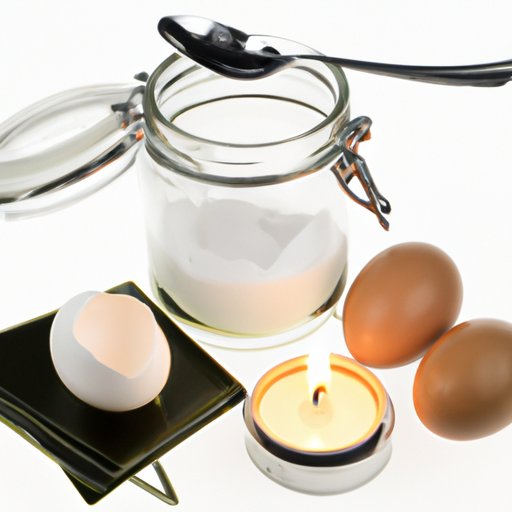
I. Introduction
Burns are a common injury that can have serious consequences, both physical and emotional. Whether it’s a minor burn from cooking or a serious burn from an accident, treating it properly is crucial for optimal healing and preventing infection. In this article, we will provide a comprehensive guide for treating burns at home using natural remedies, proper wound care, and pain management techniques.
II. Causes and Types of Burns
Burns occur when the skin is damaged by heat, chemicals, electricity, or radiation. The severity of the burn depends on how deeply and extensively the skin is damaged.
There are three types of burns, first-degree, second-degree, and third-degree, each with their own symptoms and treatments. First-degree burns are the mildest and only affect the outer layer of skin. They usually heal within a week without leaving a scar. Second-degree burns affect both the outer and second layer of skin, causing blisters and redness. Third-degree burns are the most severe and penetrate through the entire thickness of the skin.
To treat a first-degree burn, run cold water over the affected area for at least five minutes, then apply aloe vera or a cool compress. For a second-degree burn, soak the area in cold water for at least 15 minutes, then apply a topical ointment like silver sulfadiazine cream or aloe vera. Third-degree burns require immediate medical attention.
III. Natural Home Remedies for Treating Burns
Natural remedies can help soothe and promote the healing process of a burn. Aloe vera is one of the most popular remedies, thanks to its anti-inflammatory and skin-soothing properties. Simply apply fresh aloe vera gel to the affected area and reapply as needed. Honey is another natural remedy that can help speed up the healing process, as it has antibacterial properties that can prevent infection. To use, apply a thin layer of honey to the burn and cover with a sterile bandage.
Coconut oil is another popular remedy due to its moisturizing and antimicrobial properties. Apply warm coconut oil to the affected area and leave it on for several hours, then rinse off and repeat as needed. Add a few drops of lavender essential oil to your coconut oil for added calming and healing effects.
IV. When to Seek Medical Attention
If a burn is larger than 3 inches in diameter or located on the face, hands, genitals, buttocks, or over a larger area of the body, it is recommended that you seek medical attention immediately. Additionally, if a burn causes severe pain, looks infected, or develops blisters, it’s important to seek medical attention right away.
V. Proper Wound Care to Prevent Infection
Proper wound care can help prevent infection and promote optimal healing of a burn. Start by cleaning the wound thoroughly with mild soap and water, then apply an antibiotic ointment like Neosporin and cover with a sterile bandage. Change the bandage daily and watch for signs of infection, such as redness, swelling, or pus. If any symptoms arise, seek medical attention immediately.
VI. Managing Pain Associated with Burns
Dealing with the pain of a burn can be challenging. Over-the-counter pain relievers like acetaminophen or ibuprofen can help manage pain and reduce inflammation. Follow the dosing instructions carefully to avoid overdosing. Deep breathing or guided meditation can also be helpful for managing pain and anxiety associated with a burn injury.
VII. Conclusion
In conclusion, treating a burn at home requires proper care and attention to promote optimal healing while preventing infection and pain. By using natural remedies, proper wound care, and pain management techniques, you can help your burn injury heal properly and quickly. Remember, seek medical attention immediately if the burn is serious or showing signs of infection.





